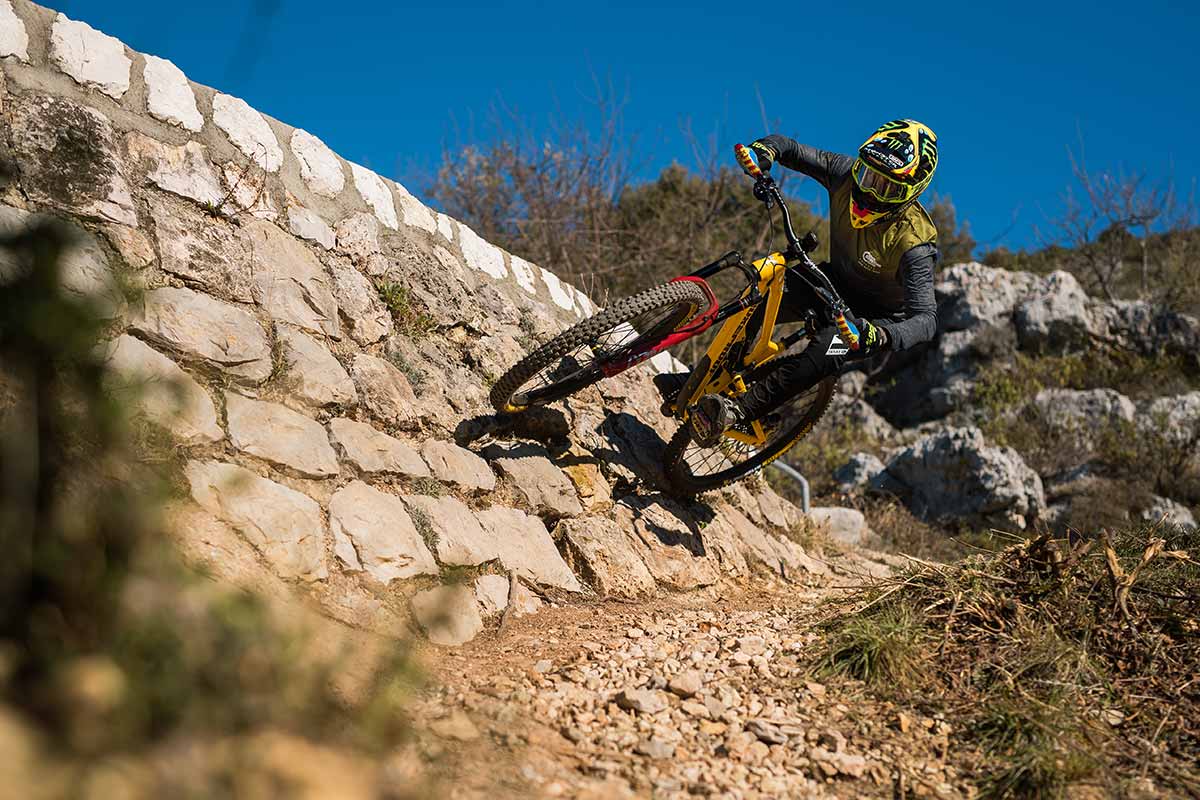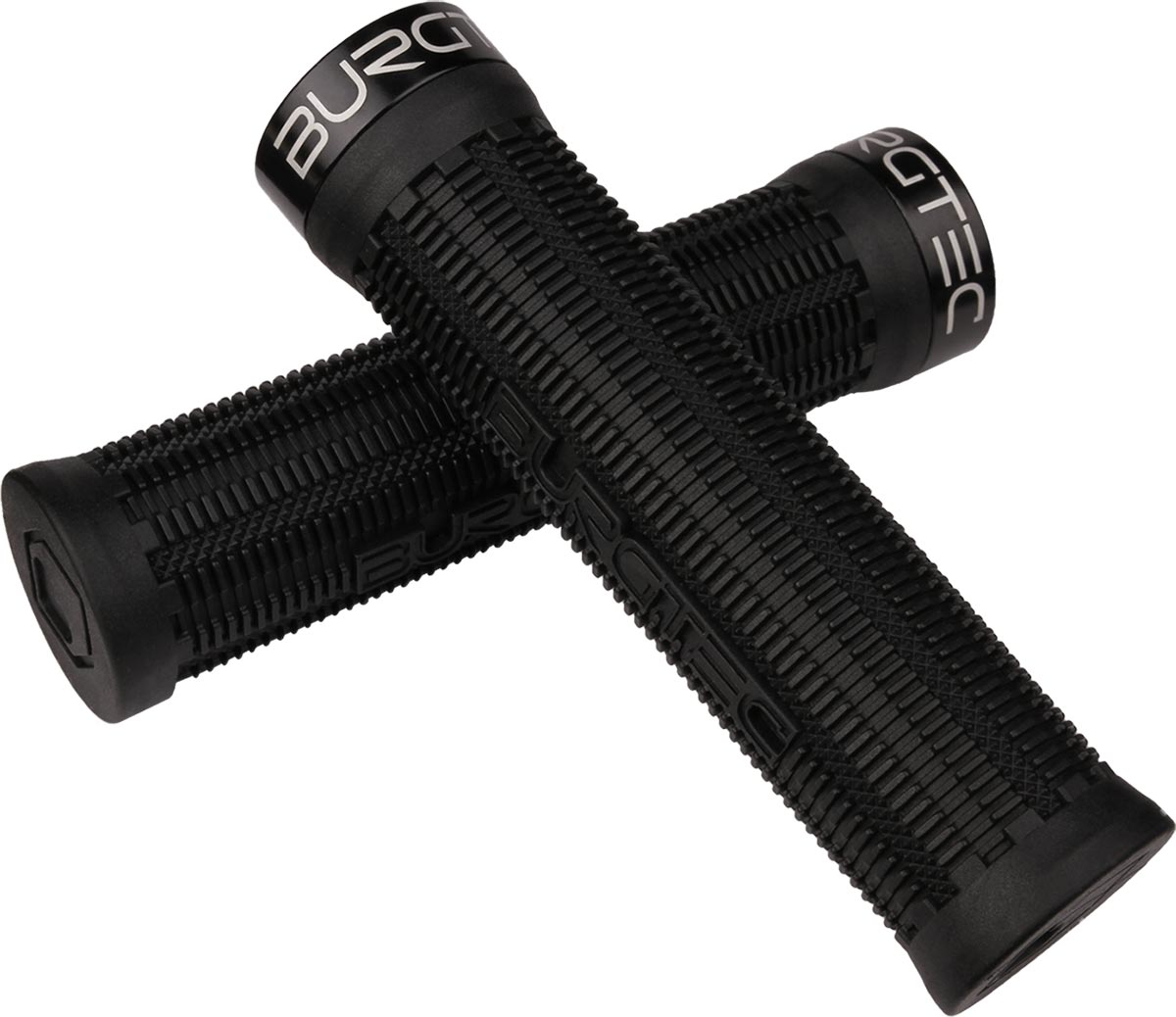We know, there’s no such thing as a stupid question. But there are some questions you might not want to ask your local shop or riding buddies. AASQ is our weekly series where we get to the bottom of your questions – serious or otherwise. This one concerns the enduro cockpit setup. Hit the link at the bottom of the post to submit your own question!
Are you unsatisfied with your current enduro cockpit setup? Want to improve comfort and control but don’t know where to start? There are so many factors involved in trying to achieve a comfortable cockpit setup that works for you.
How do I set up my mountain bike cockpit for enduro?
What bar? How wide? What circumference? What grips? What stem length? The number of different combinations is seemingly endless. Let’s face it, few of us have the time or the money to keep experimenting. We just want to ride! We called upon the expert component manufacturers, asking them to weigh in on the topic. Thank you to Burgtec, Unite Co, Nukeproof, Wolf Tooth Components and e*thirteen for answering the call.
Is there an optimal bar width for each person and if so, how can I work out what it is for me? Aside from trial and error, how can I make an educated guess?
Burgtec: Talking completely generally I’d say most riders above 5″ 10′ that I know run our bars the full 800mm. Yeah I think trial and error is the best way. Don’t be scared to try stuff out.
Unite Co: Yes and no. There are so many different factors that can affect what width bar to run such as shoulder width, arm length, hand position, riding preference, type of terrain. A lot of world cup DHers cut the bars down to 760mm.
Why? A wider bar, while more stable, also slows down the handling and of course it’s harder to thread a tight section flat out. However Pros ride all day every day. They are strong and a wide bar holds little advantage to them. For me the best way is to feel if your arms feel stretched, then cut down your bars.
Go down in 10mm steps (5mm per side) and you can always cut again if needed. If your bars feel close to hitting trees, again cut them down. A bit more clearance here will give a lot more confidence on the trail.

Nukeproof: The old rule was “as wide as your shoulders” but then you have to take personal preference into account and also vanity. A few years ago the wide bar fashion dictated “wider the better” with companies offering wider and wider options. It’s a lot more difficult to make a bar grow than to cut it down, so we choose to spec 800mm wide bars on most of our bikes, so people can cut them, but I wonder how many people do?
In truth it’s personal a choice. Looking at our athletes they haven’t changed their setup for many years! Sam Hill (5’9) runs his at 755mm , Elliott Heap (5’8) 760mm, Pager (5’9) 760mm, Kelan Grant (6’0) 780mm, and I’m about 6’4 and like a 780mm bar.
Then you will find some local anomalies where some riders will run narrow setups to adapt to local trail conditions (lots of tight trees/ turns) others may choose wider bars for more open and flat out conditions – so the science is kind of out the window!
e*thirteen: The go-to method for a lot of riders is to close your eyes and grab the bars where it feels comfortable. What’s ergonomically best depends on your shoulder width, it’s different for everyone.
How does stem length affect bike handling and what would you recommend for slow, steep trails?
Burgtec: Really hard question. Depends on wheel size and if the rider is on the correct size bike for them. Also if the bike has what’s considered modern geometry. I would say as a very, very general rule: 29″ wheels are best suited to 35-42.5mm length stems and 27.5″ wheels are best suited to 42.5-50mm length stems. I would definitely recommend riders play about with this to get what they think is best. You can always borrow a stem from a mate to play around and find what’s best for you.
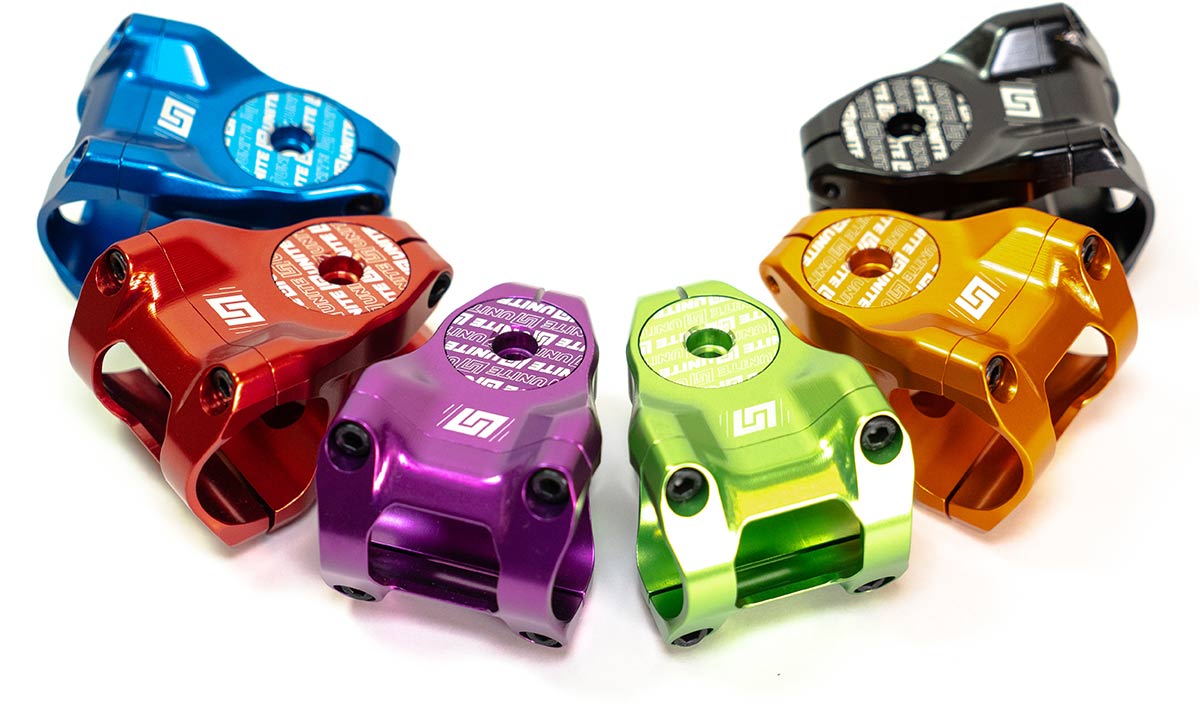
Unite Co: The shorter your stem the quicker your bike’s handling will be. It will also bring your centre of gravity further back which is perfect for steep trails. This is also where wide bars can be a negative. Spreading your arms out further will bring your chest down and bring your center of gravity forwards again. It’s about finding that perfect balance where you feel comfortable and keep grip on both tyres.
Nukeproof: Like bars, stem length is personal. But a bike is generally designed around a certain stem length for many a good reason. On paper, a shorter stem can make a bike “more agile”, but in certain cases it can make the front end twitchy.
A longer stem may give a rider more room on the bike or weight the front of the bike better for more stability, but on certain bikes it can make them feel slow to turn in and cumbersome.
Truth is the stem is probably more proportional to the design of the bike. If a modern manufacturer has chosen a zero/35mm/50mm stem there is probably good reason for it. For slow, steep trails you’re probably better off adjusting the cockpit setup to find a bar height and position that allows you to weight the front enough to create grip, but also get yourself over the back of the bike to get traction on the rear too.
e*thirteen: Stem length changes your reach and leverage in relation to the steer tube, or steering column. Your fork offset should be taken into account as well. The setup will vary depending on the rest of your bike’s geometry.
Why are there two handlebar clamp diameters? There’s only 3.2mm difference between the 31.8mm and 35mm “standards”. How big a difference can it really make to handling, and which one should I get?
Burgtec: This can make a massive difference. The biggest problem for us is when riders have tried other brand’s 35mm and found it too harsh and are reluctant to try it again. If 35mm is done properly it’s by far the comfiest cockpit setup. The extra diameter has allowed us to develop a compliant yet responsive layup. This kills off a ton of trail vibration but gives that quick response when you need it. 95% of our Pro riders like Steve Peat, Josh Bryceland and Loris Vergier all use 35mm because they prefer it.

Unite Co: 3.2mm in diameter turns into 10mm in circumference which is a 10% increase, so it’s more than it initially sounds.
There are also a lot of other factors that affect the stiffness such as bar material as the stiffness of different aluminums can vary and then of course you have carbon fibre where they lay it up in certain areas to make it more compliant.
An area often overlooked that greatly affects bar stiffness is your stem. A narrow stem won’t clamp the bar as securely. For increased stiffness choose a wide stem with a large clamp area.
In reality with all those different variations does it really make a difference? Not really. I run my suspension pretty hard. I was able to notice the stiffer bar straight away, however other riders won’t be able to notice the difference, so again run what feels comfortable for you. Personally I like the look of the 35mm bar. It’s bigger, looks more aggressive and it’s more fitting with the rest of the components on the bike. With 38mm stanchions and large frame tubes a 31.8mm bar just looks out of place.
Nukeproof: Originally the idea behind a 35mm bar was to have a stronger & wider bar, but with good manufacturing and engineering a 31.8mm bar can be beyond the strength characteristics you need for a bike. The reason we have started to offer a 35mm bar now, is purely due to a customer demand.
Strength hasn’t ever been a problem, but what we do try and build into all our bars is a healthy level of compliance (flex) to absorb small bump chatter and reduce the fatigue to the arms. It’s a little more difficult to do this on a 35mm bar, so they can feel a little stiffer, so if you as a rider are looking for this it may be a way to go.
Personally on most local trails (short 1-2 min tech trails) in back to back testing I rarely notice a difference (short of aesthetic – the chunky 35mm bar can suit some of today’s carbon frames better). However, come European long alpine descents and races I will be ensuring I have my trusty 31.8mm Horizon Carbon bars fitted!
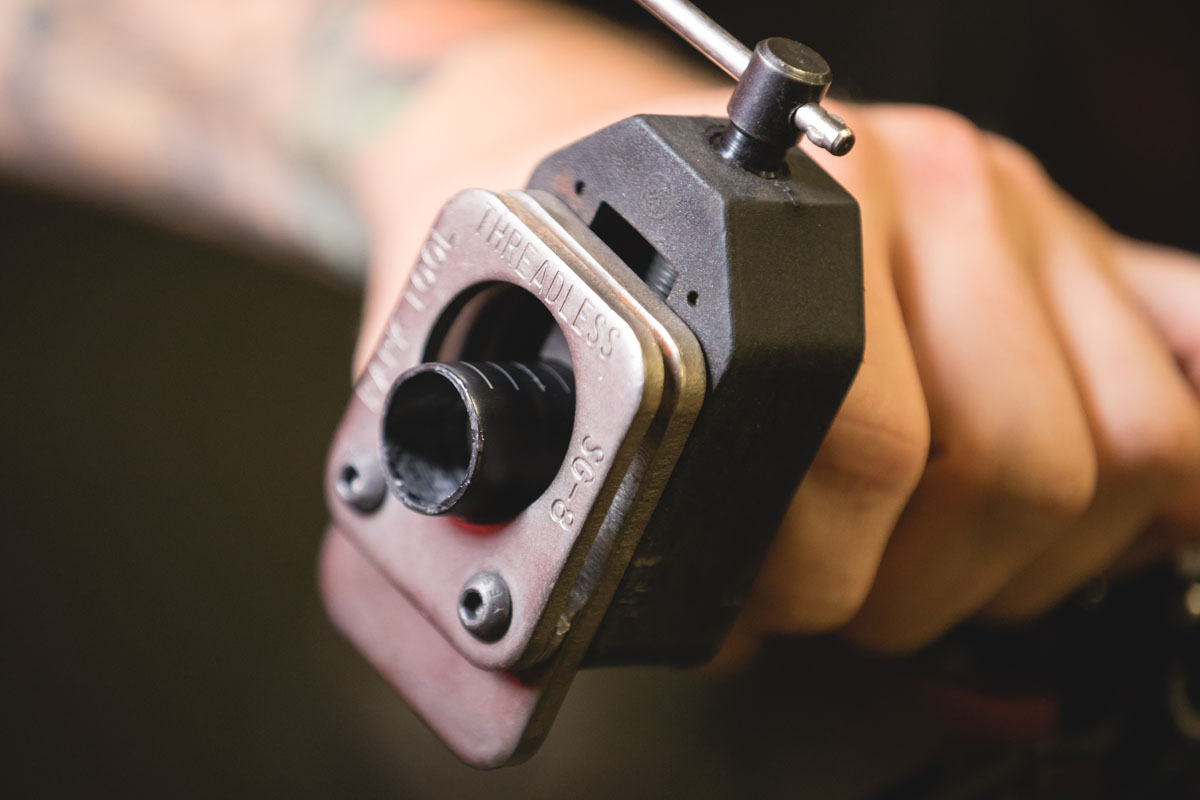
e*thirteen: Bigger diameters can be lighter without compromising strength. It also helps with stiffness, depending on the material.
What type of grips are best for reducing arm pump? I see some companies offering really fat grips for enduro cockpits, claiming to reduce hand fatigue. Is this dependent on hand size and if so, what size? I have fairly small hands and always wear pad-less gloves.
Wolf Tooth Components: Arm pump is caused by blood restriction and accumulation in the forearms, which can be the result of being tense and holding on to the grips too hard. It is more of a function of fitness, strength, position on the bike, suspension setup, and just being relaxed on the bike than grip choice.
If running a larger grip with a tacky texture and a soft feel makes it possible to hold the grip less tightly, arm pump would be reduced. There is a sweet spot in grip diameter for a given hand size. If the grip is too small, you have to flex your fingers/hand a lot to get a good grip. If it is too large, you can’t adequately wrap your fingers around it. The optimal size is going to be a function of hand size and personal preference.
All that said, grip shape does play a role in riding comfort. We offer grips with a cam shape that has flat surfaces to match the joints in your fingers. If you make the OK signal with your index finger and thumb you will notice the shape made by the inside of your finger looks like a hexagon with flat surfaces, not a perfect circle like most grip shapes.

Think of it like using a box end wrench (your hand) to grip a hex nut (CAM shaped grip) where the bone structure of your fingers is aiding your grip. By comparison, holding a round grip is like using a pliers on a round shaft where you have to just rely on hand strength and friction.
In short, riding fitness is the greatest cause of arm pump. Pairing this with a grip choice that matches well with your hands will help you stay more comfortable on your bike and allow you to spend extra time on the saddle.
Burgtec: Being conditioned is by far the best thing you can do to reduce arm pump. Coming down a 30 minute pounding descent in the Alps when all you’ve been used to at home is 2-3 minute downhills is going to require a greater level of conditioning and there is no wonder product that can help with that.
We developed our Bartender Pro Grip with Greg Minnaar. Everybody knows he is really fussy about his cockpit setup but it was really easy to work with someone who knows exactly what they want. He wanted a grip that gave him superior traction, plenty of cushioning and wasn’t too fat. Having a grip that gives plenty of traction means you can have a more relaxed hold on the grip and we found this is less fatiguing. World Cup Race tracks are as rough as it gets so it’s a really important feature.
Nukeproof: Grip diameter is hand size related rather than fatigue related. The material that makes up the grips is more likely to impact fatigue (combined with a grip that fits your hand size).
So, looking towards some softer grip compounds can help improve contact point to the bars and reduce the need to grip so tight! I’ve been told, the faster you go the easier it is on your hands! Most of us are braking much more than quick riders, so much so that we hit more holes and thus suffer with fatigue more.
I’ve found that a thin, better fitting glove will also help reduce fatigue. Your grip on the bars is better as there is less fabric movement, so your hands need less pressure to grip.
What handlebar material is best for a comfortable enduro cockpit setup? I don’t want an ultra-stiff bar that will rattle me to bits. I want something that will dampen vibrations a little.
Burgtec: We recently signed Mark Scott (Santa Cruz/SRAM). When he did his initial parts order he wanted 31.8mm Aluminium Bars and was totally happy with that cockpit setup. I knew because of the research and development we put into our Carbon Enduro Bars this would be a better product for him.
After months of me badgering him to try our 35mm Carbon Enduro Bars he gave in and said OK (probably just to shut me up). He loved them straight away and that’s now his go-to setup. We riders are a fickle bunch and often scared to change.
Unite Co: Alu bars are generally most compliant. If you’re finding bars too stiff then I would suggest looking at your suspension settings. Try reducing the low speed compression and even softening your suspension. These little changes can make a big difference on the trail.
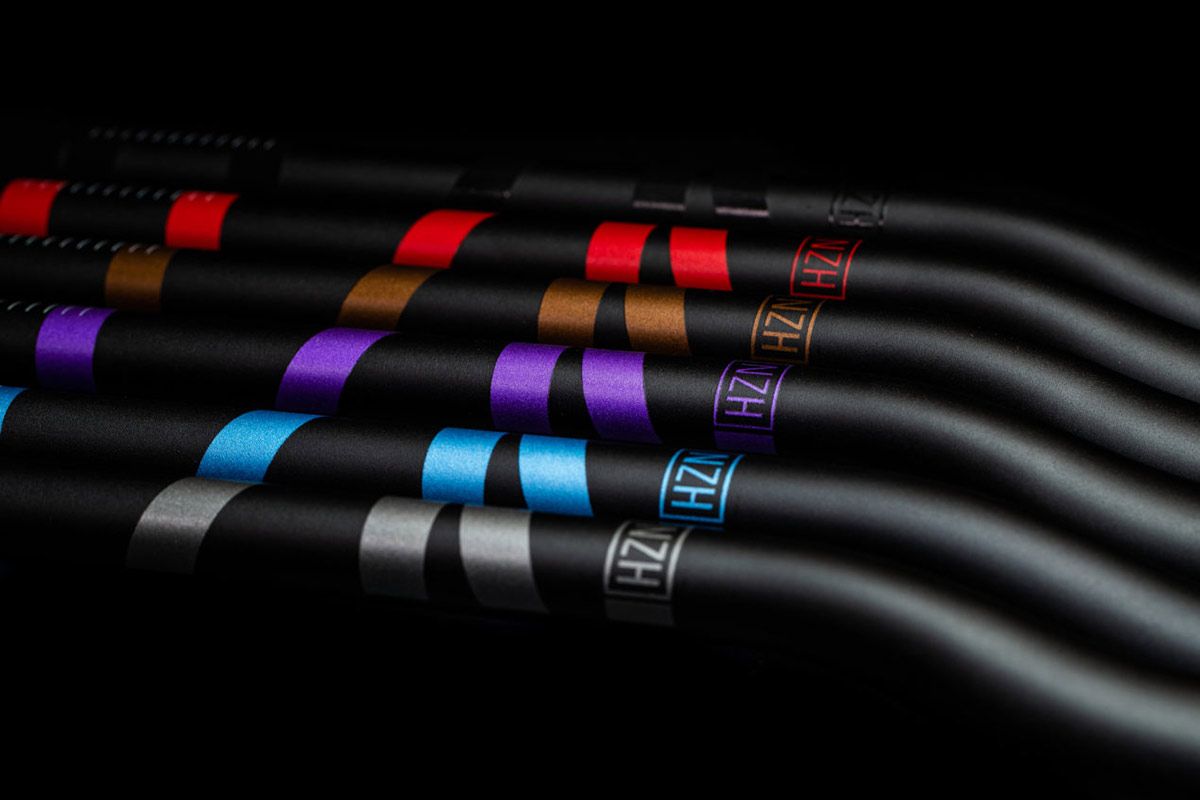
Nukeproof: Again this is brand dependent and varies in the material used to create the handlebars. A more premium aluminium alloy compound is generally better with small bump absorption than a “cheaper alloy”. If you look for a bar that is 7075 alloy; in general terms it may have better properties than those of a 6061 alloy bar.
If you are looking at carbon bars, they can vary between manufacturers. We’ve always tried to add a lot of compliance into our carbon bars by mixing the lay up and materials in the bar, so personally I find the carbon bars a little more forgiving than an alloy bar.
You then have to throw the bar position, back- and upsweep into the mix which also will alter the feel of the bar and your riding position on the bike, all of which will affect your comfort on the bike – a perfect neutral position will stop you leaning your body weight on the bars as much fatiguing your hands. There is a lot of ergonomics that go into it not just a simple case of “X” product will make you better.
e*thirteen: Carbon bars will dampen vibrations more than aluminum, typically. But there’s a lot to be said for suspension sensitivity and tire pressure as well. You can also get softer or thicker grips.
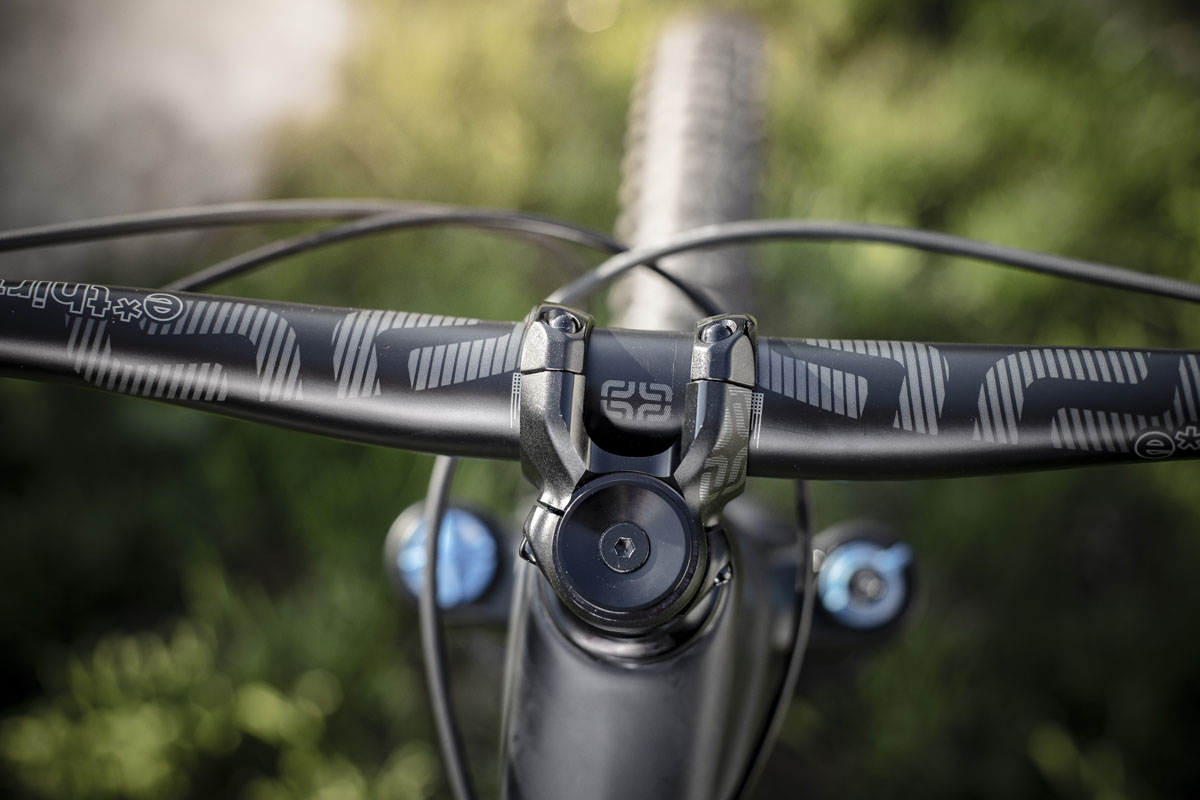
What brake lever angle is best for wrist health? I see a lot of pros run their enduro cockpit setup with really flat levers, but I find this really uncomfortable and it gives me horrendous arm pump. Is this because my arm strength and grip strength is not as good as theirs, or does it purely depend on the steepness of terrain?
Burgtec: Yeah it could possibly be terrain or perhaps their riding background. Lots of Ex Motocross and Trials riders run really flat levers. Pro riders don’t use their brakes so don’t worry about what they’re doing too much. I’d say set your levers pretty neutrally in relation to your forearms when you’re in the attack position and play with it from there.
Nukeproof: Lever angle again is personal to a rider and generally comes from your riding background. Riders who generally ride steep trails often prefer a slightly flatter position as their upper bodies are lower and further back on the bike. This changes the angle of the arms.
The general setup aim is to have the levers in a straight line with your arms in your “rider attack/descending position”. There is also the fact that a lot of pros have a moto background where levers are run a little flatter. Also, consider that “the Pros” brake A LOT LESS and are more controlled than mere mortals like you or I.
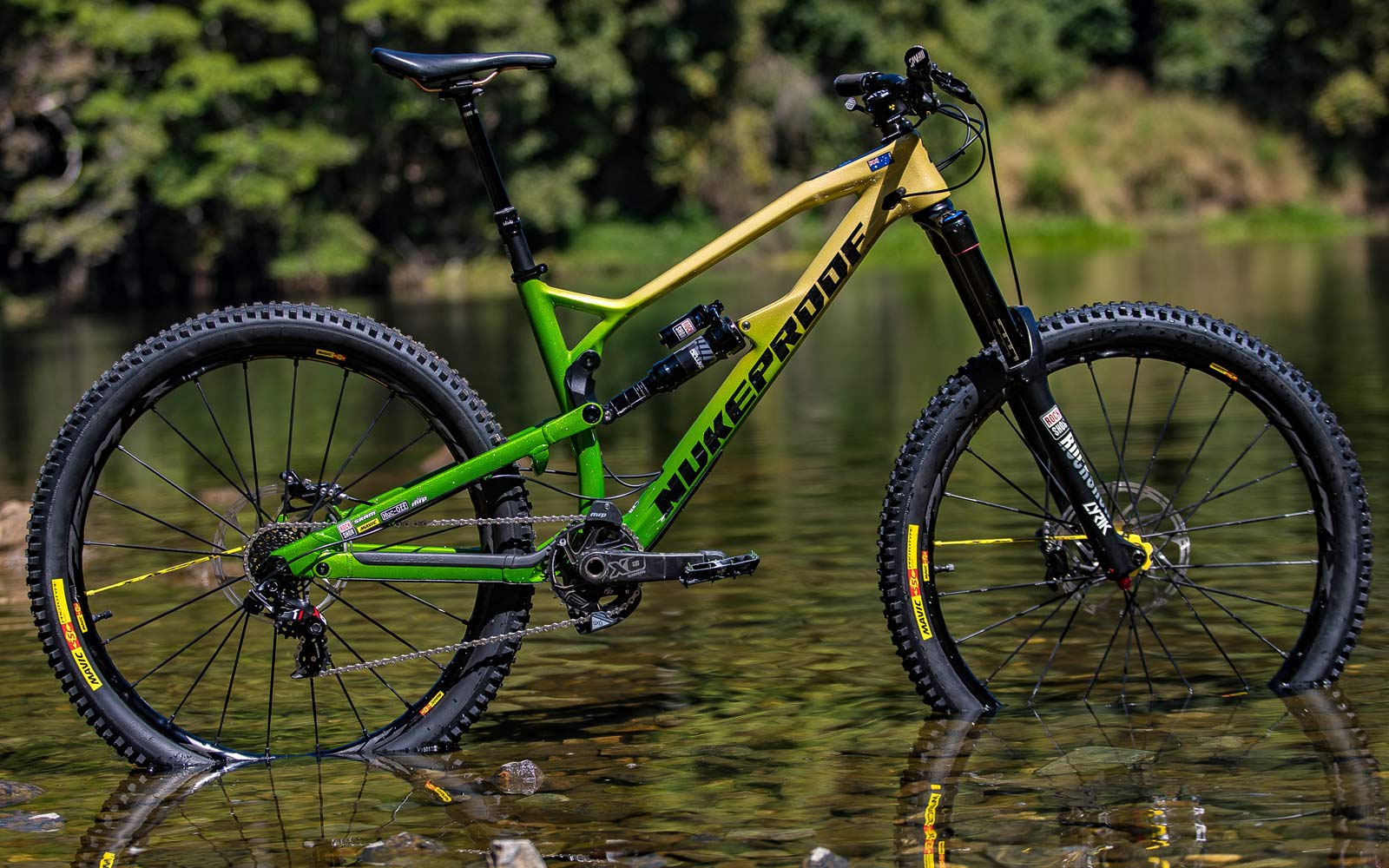
Where we drag our brakes fatiguing our hands, they don’t! The other factor is the quality and condition of the brakes/discs they are using. Generally they are running the most powerful brakes on offer from their desired brand and most top pros will have a mechanic to maintain their brakes to ensure they work. If you’re like me, you wash the bike put it away and hope it works as well as you remembered (I don’t bleed/new pads/new discs before most rides. In fact, I think I have a pair of season-old ex team discs on my bike as they looked too good to chuck away after one event!).
Again, it’s more than one factor that will save your arms. Lastly, just watch a top pro like Sam Hill’s body position on a bike. It’s wildly different from what you may see on local trails. He’s generally in a super strong riding position which helps transfer energy and absorb trail hazards through his muscles efficiently, so he’s always preserving energy.
e*thirteen: This is less about wrist health and more about ergonomics. A lot of pros run flatter bars because they ride steep tracks all day. This puts the whole bike and your body at a different angle, so they are just adjusting to where their hands are gonna be most of the time. It’s a personal preference.
If the arm pump is still bad, once you get your cockpit setup where you like it, you could do some focused exercises off the bike, or go for more powerful brakes.
Check out Wyn Masters’ enduro cockpit setup in the Pro Bike Check video. Wyn races EWS for GT Bikes, on the GT Force 29er. He runs a Race Face handlebar and stem, with ODI Grips. It looks like he runs his brake levers pretty steep too.
Got a question of your own? It doesn’t have to be on cockpit setup! Click here to use the AASQ form to submit questions on any cycling-related topic of your choice, and we’ll get the experts to answer them for you!

